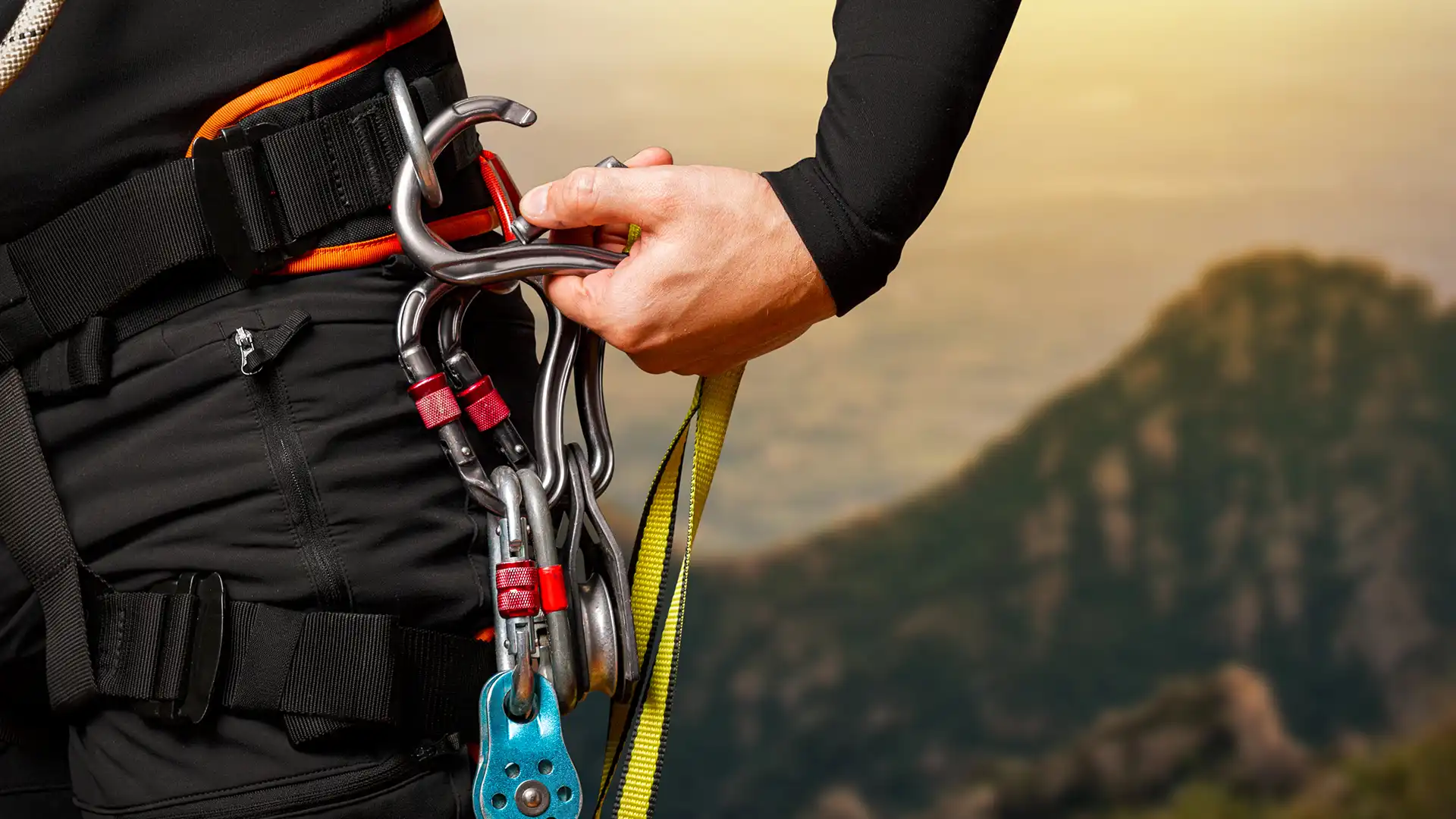A carabiner is an indispensable component of work safety equipment, serving as a critical link for connection and safety. This small yet robust metal ring forms a quick and reliable bridge between ropes, safety harnesses, and other equipment. It plays a life-saving role in high-risk environments such as construction, energy industry, and climbing. EKS Work Safety offers reliable, high-quality carabiner models to meet user needs.
Carabiners are typically connection elements equipped with a spring-loaded gate mechanism. This mechanism facilitates easy opening and closing while preventing accidental openings. When chosen correctly, carabiners minimize fall risks and enhance work efficiency.
Why Are Carabiners Important?
Carabiners serve as critical connection points during work at height. Selecting an incorrect or low-quality product can jeopardize worker safety. Key considerations include:
- Durability: Carabiners must have high strength to withstand demanding conditions.
- Ease of Use: The locking mechanism should be quick and reliable.
- Compliance with Standards: Products must meet CE and EN standards.
EKS Work Safety uses only high-quality materials in production and tests all carabiners to international standards.
Types of Carabiners
Carabiners used in work-at-height applications vary to meet different needs. Some common types include:
Screw-Lock Carabiner
Provides additional security with a manually closed screw mechanism, ideal for fixed connections.
Auto-Lock Carabiner
Offers practical use with a single-motion locking system, perfect for connection points requiring frequent opening and closing.
Steel Carabiner
Preferred for heavy industrial applications due to its high strength. EKS Work Safety enhances durability with special surface treatments.
Aluminum Carabiner
Lightweight and portable, reducing fatigue during prolonged use.
What to Consider When Choosing a Carabiner?
Selecting the right carabiner is critical for safe work practices. Key factors to consider include:
- Load capacity
- Compatibility with other equipment
- Type of locking mechanism
- Material corrosion resistance
EKS Work Safety provides carabiner models suited to various working conditions and assists users in selecting the right product.
Carabiner Standards and Certifications
The reliability of carabiners is determined not only by material quality but also by international certifications. Products compliant with CE, EN, and UIAA standards undergo rigorous testing for load capacity, lock security, and corrosion resistance. These certifications ensure reliable performance in challenging conditions. EKS Work Safety produces all carabiners in accordance with these standards, ensuring high safety for users.
Applications of Carabiners
Carabiners are used not only in industrial work-at-height equipment but also in various other fields. Beyond industries like construction, energy, and telecommunications, they provide safety in sports such as climbing and mountaineering.
Carabiners in Industrial Use
In areas requiring maintenance, assembly, or inspection at height, carabiners create a secure connection between harnesses, lanyards, and anchor points.
Proper Use of Carabiners
While carabiners are robust, improper use can pose risks. To ensure safety:
- Do not apply load until the gate is fully closed.
- For screw-lock models, ensure the lock is fully secured.
- Regularly inspect for deformation or cracks.
EKS Work Safety provides detailed usage instructions with its products to promote safe practices.
Risks of Incorrect Carabiner Use
Even the most durable carabiners can pose significant safety risks if used incorrectly. Common mistakes include:
- Overloading: Exceeding the carabiner’s specified load capacity can cause micro-cracks in the material.
- Cross-Loading: Applying force to the carabiner’s side rather than its main axis can reduce strength by up to 60%.
- Failure to Lock: In screw-lock or auto-lock models, an unsecured gate may open accidentally.
Such errors not only damage equipment but also increase fall risks. EKS Work Safety provides technical instructions and safety warnings to help users adopt proper usage habits.
Maintenance and Regular Inspection of Carabiners
Regular inspection and maintenance are essential for the safe and efficient use of carabiners. Before and after each use, visually inspect the equipment for rust, wear, or deformation. Issues with the locking mechanism, such as looseness or improper function, indicate the need for replacement.
Neglecting these inspections can reduce the carabiner’s load capacity and increase safety risks. Periodic maintenance in line with manufacturer standards extends equipment lifespan and enhances work safety. EKS Work Safety supports users with technical guidance on maintenance and proper use to maximize equipment performance.
Safe Work with Carabiners
Carabiners are a critical component of safety systems, effectively preventing falls when used correctly. For safe use, carabiners must be selected according to their technical specifications and used in compliance with standards. They must also be fully compatible with ropes, harnesses, and other connection equipment. Before use, test the carabiner within the system and verify the integrity of connection points.
Discover EKS Work Safety’s Quality Standards
EKS Work Safety employs:
- High-quality alloy materials
- Precision manufacturing techniques
- International testing standards
This ensures products are durable, long-lasting, and resistant to harsh conditions.
Secure Your Life with the Right Carabiner
Carabiners are vital connection elements in work-at-height and safety applications. Their durability, compliance with standards, and regular maintenance directly impact both equipment lifespan and user safety. EKS Work Safety, with its commitment to international quality standards, offers reliable, high-performance carabiner solutions tailored to various industries.
Contact us to elevate your equipment safety and manage risks during work at height.
You can visit our LinkedIn page for more.



 by
by